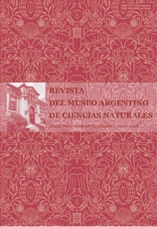Origen y desmantelamiento de lateritas paleogenas del sudoeste de Uruguay (Formacion Asencio)
Resumen
Origin and dismantling of Paleogene laterites from southwest Uruguay (Asencio Formation). The Asencio Formation is a thin sequence of dark red beds bearing indurated paleosols with a very rich insect ichnofauna, exposed on the west margin of the Río de la Plata Cratón. Two interfingering facies, having transitional to sharp contacts, were recognized: ferruginized duricrusts and nodular beds. The pedogenized structure of the duricrusts ranges from prismatic to angular blocky (peds) with frequent insect (Palmiraichnus and Teisseirei) and root traces, to massive-alveolar without discrete traces. The composition is quartzitic and the microstructure is spongy, with a ground mass composed of argillic-hematitic microgranules, showing argiloferrans and pedotubules. These features correspond to Bt (argillic) horizons of well-developed Ultisols. The nodular beds are clay-matrix, disorganized massive conglomerates. Nodule composition and texture are similar to the crusts. Trace fossils are also frequent (Uruguay, Coprinisphaera, Monesichnus) and commonly rotated. A residual origin by duricrust weathering and disintegration is suggested for these deposits. The facies association can be compared to the lateritic profiles of the tropical savannahs. The bio-geochemical metabolism of these profiles, controlled by climatic (hidrologic) changes, produced two constructive/destructive stages, transforming iteratively mature Ultisols into laterites: 1) The ferruginuous duricrusts correspond to ferricretes, which would have developed in a warm and highly contrasted climate, where intense dryness would have produced dehydration and induration of the soils. 2) Subsequent solubilization because of increasing precipitation (rehydratation), would have produced ferricrete dismantling and the residual nodular beds. Such climatic conditions for middle latitudes would be expectable for the Paleogene climate optimum. Thus, an early Eocene age is proposed, in accordance to the paleosol insect ichnofauna.
Texto completo:
PDFEnlaces refback
- No hay ningún enlace refback.

This work is licensed under a Creative Commons Attribution 3.0 License.

